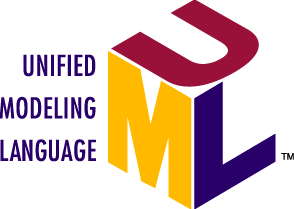Nino Galle
UML

Unified Modeling Language
Large enterprise applications - the ones that execute core business applications, and keep a company going - must be more than just a bunch of code modules. They must be structured in a way that enables scalability, security, and robust execution under stressful conditions, and their structure must be defined clearly enough that maintenance programmers can (quickly!) find and fix a bug that shows up long after the original authors have moved on to other projects. That is, these programs must be designed to work perfectly in many areas, and business functionality is not the only one (although it certainly is the essential core). Of course a well-designed architecture benefits any program, and not just the largest ones as we've singled out here. We mentioned large applications first because structure is a way of dealing with complexity, so the benefits of structure (and of modeling and design, as we'll demonstrate) compound as application size grows large. Another benefit of structure is that it enables code reuse: Design time is the easiest time to structure an application as a collection of self-contained modules or components. Eventually, enterprises build up a library of models of components, each one representing an implementation stored in a library of code modules. When another application needs the same functionality, the designer can quickly import its module from the library. At coding time, the developer can just as quickly import the code module into the application.
Modeling is the designing of software applications before coding. Modeling is an Essential Part of large software projects, and helpful to medium and even small projects as well. A model plays the analogous role in software development that blueprints and other plans (site maps, elevations, physical models) play in the building of a skyscraper. Using a model, those responsible for a software development project's success can assure themselves that business functionality is complete and correct, end-user needs are met, and program design supports requirements for scalability, robustness, security, extendibility, and other characteristics, before implementation in code renders changes difficult and expensive to make. Surveys show that large software projects have a huge probability of failure - in fact, it's more likely that a large software application will fail to meet all of its requirements on time and on budget than that it will succeed. If you're running one of these projects, you need to do all you can to increase the odds for success, and modeling is the only way to visualize your design and check it against requirements before your crew starts to code.
What can you model with UML?
-
Structure Diagrams include the Class Diagram, Object Diagram, Component Diagram, Composite Structure Diagram, Package Diagram, and Deployment Diagram.
-
Behavior Diagrams include the Use Case Diagram (used by some methodologies during requirements gathering); Activity Diagram, and State Machine Diagram.
-
Interaction Diagrams, all derived from the more general Behavior Diagram, include the Sequence Diagram, Communication Diagram, Timing Diagram, and Interaction Overview Diagram.
